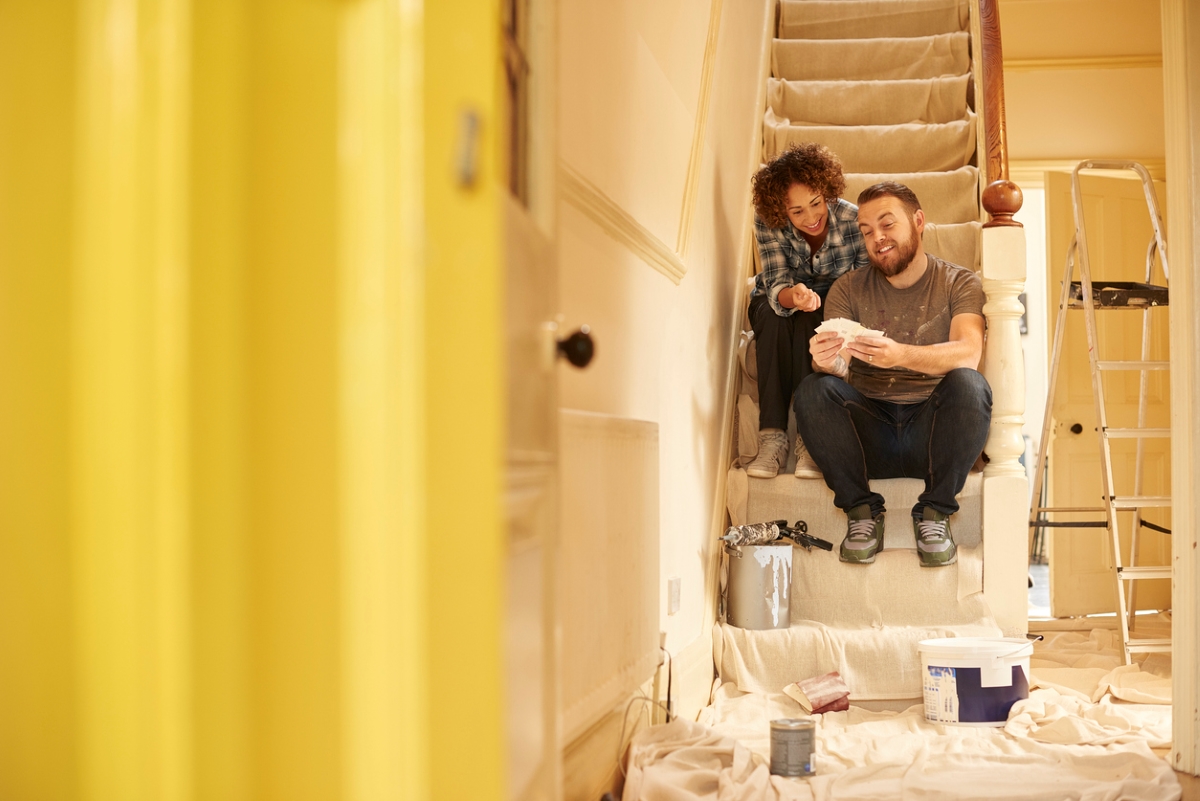We may earn revenue from the products available on this page and participate in affiliate programs. Learn More ›
Workplace health and safety standards are essential to protecting workers from hazards and preventing job-related illnesses, injuries, and deaths. But safety shouldn’t stop when we clock out. According to the National Safety Council, there were over 128,000 preventable injury-related deaths in the home in 2021, and more than 35 million injuries.
While private residences may not be subject to the strict regulations of the Occupational Safety and Health Administration (OSHA), adopting safe practices at home—especially when performing maintenance or repairs—can help avoid injury and keep the home a haven.
Here are 10 areas where it’s especially important to practice safety awareness to protect against common home hazards.
RELATED: 14 Invaluable Tools to Have on Hand When DIY-ing Alone
1. Ladders
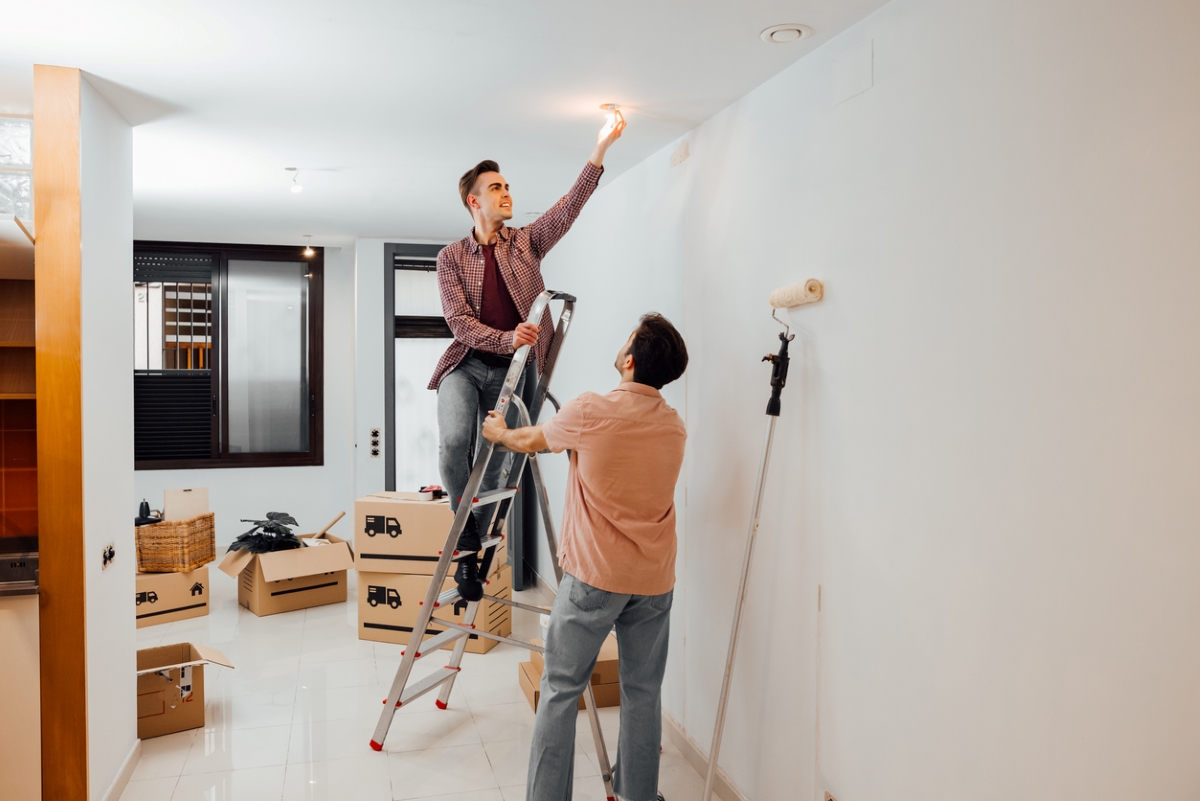
Nearly a quarter of all home deaths in the U.S. are caused by falls, and any household maintenance task that requires working at heights carries a risk of falling. To make these tasks safer, always follow these best practices when using a ladder:
- Before using the ladder, inspect it to ensure it’s in good condition.
- Use the right type of ladder for the job.
- Place the ladder on an even, solid footing.
- Make sure the ladder is high enough for you to reach the work area without overextending.
- Never stand on the top two steps.
- If you are using a step ladder, ensure that it is fully opened and secured.
- When using an extension ladder, secure and extend the ladder at least 3 feet above the landing point.
- Always face the ladder when using it and maintain three points of contact with it.
- Do not lean away from the ladder. Keep your weight centered between the side rails.
RELATED: Never Make These 13 Mistakes with a Ladder
2. Housekeeping
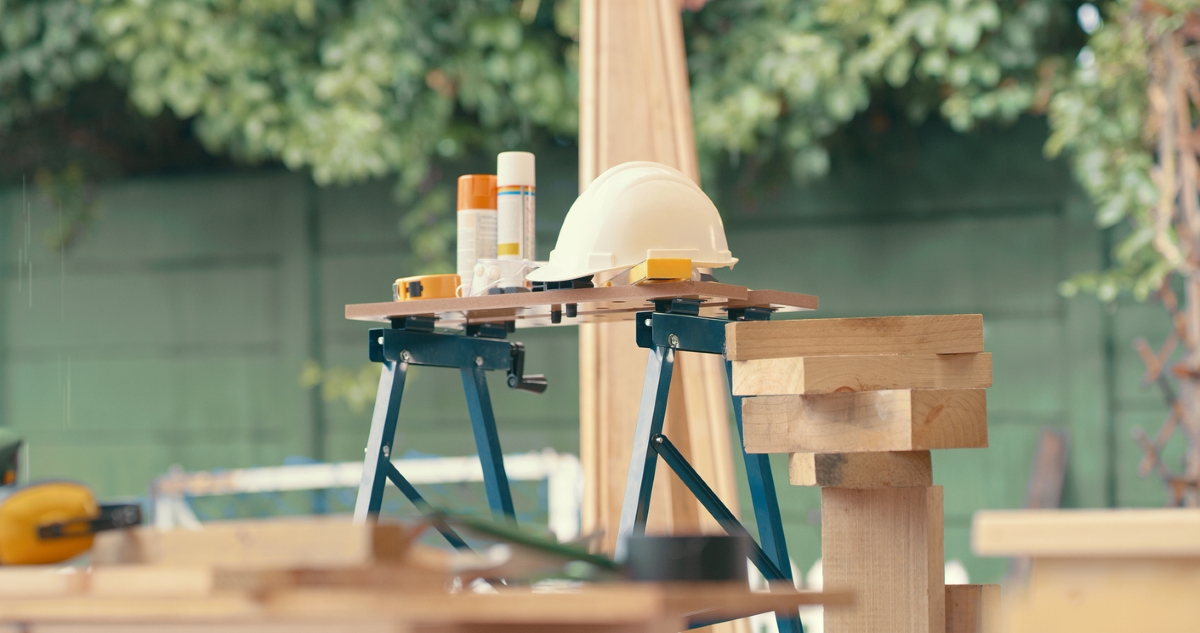
A messy workstation is often an unsafe one. OSHA requires that workplaces be kept organized, uncluttered, and hazard-free. Applying these standards to your work areas at home can help prevent injury and accidents. Follow these tips to help keep your work spaces hazard-free:
- Before you start to work, look around for things that could cause you to slip or fall.
- Clean up wet and oily surfaces, and remove snow and ice from outdoor work areas.
- Keep walkways and stairways clear of clutter and debris.
- Get in the habit of putting tools away immediately.
- Dispose of materials you no longer need.
- Clean, tidy, and organize your work area regularly.
- Store items in appropriate areas where they will not become damaged or pose a hazard.
RELATED: 15 Easy Ideas for Tool Storage
3. Lifting
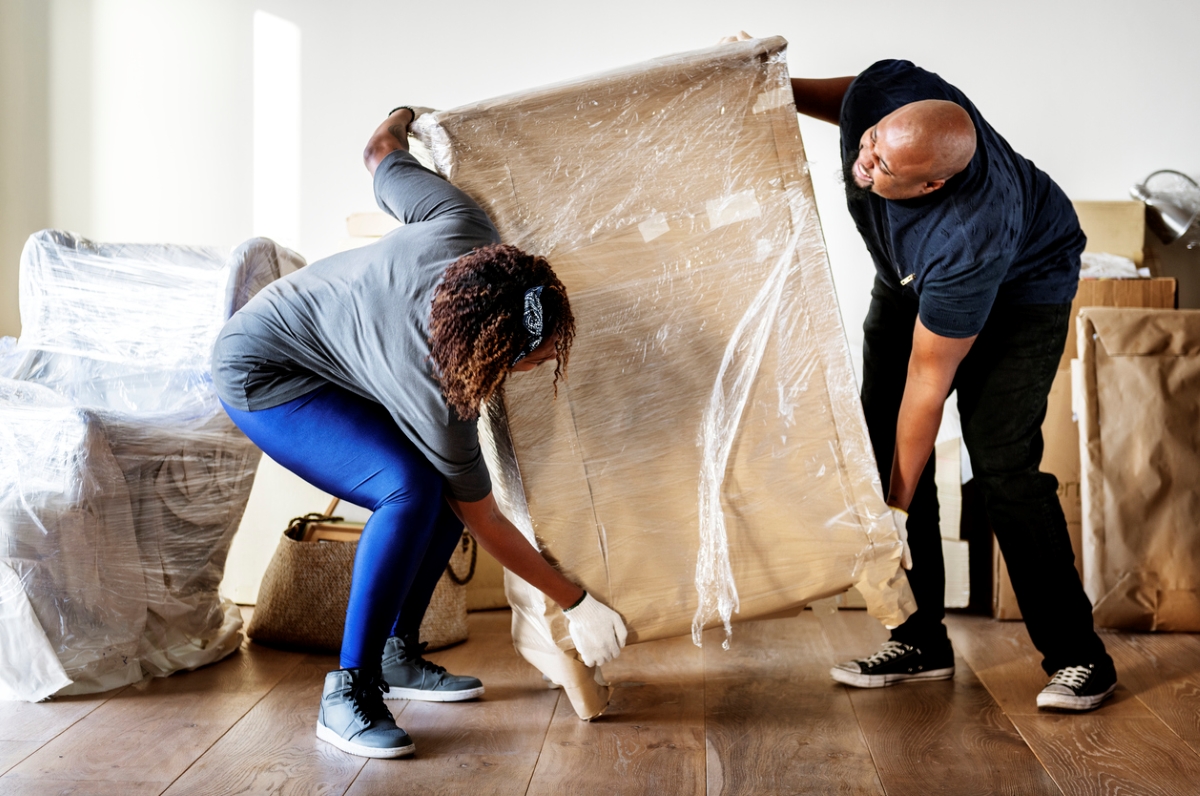
According to the National Safety Council, overexertion and bodily reaction account for 22 percent of all nonfatal workplace injuries or illness events. Lifting is a common cause of overexertion and injury. When you have to lift and carry heavy materials or equipment around your home or property, follow these steps for doing it safely:
- Before you lift, make sure you have a clear walking path.
- Test the weight of the load; if it’s too heavy, get help or use lifting equipment, such as a hand truck.
- Stand close to the load with your feet shoulder-width apart.
- Squat down, bending at your knees. Keep your back straight and brace your core.
- Grip the load firmly and lift it by straightening your legs.
- Keep the load close to your body as you walk.
- Do not twist or turn your body while carrying the load.
- Bend your knees to lower the load, and keep your head up while setting it down.
RELATED: The 8 Most Common Reasons DIYers End Up in the ER
4. Fire prevention
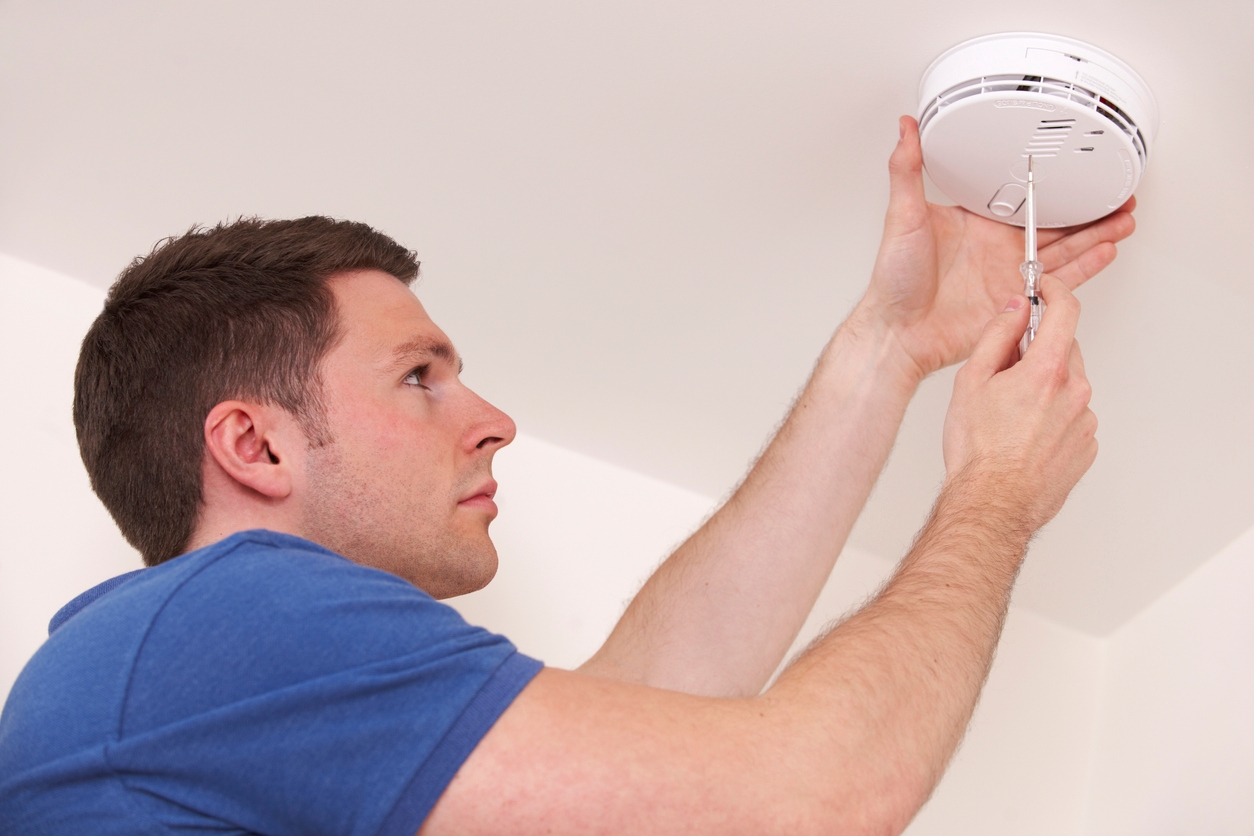
According to the National Safety Council, fire is the third-leading cause of preventable deaths at home. Home workshops and garages can be especially hazardous given the number of combustible materials they often contain. Follow these fire safety tips while doing work around the home:
- Have smoke alarms on every level of the home, and test them regularly.
- Install a heat detector in your garage or workshop.
- Have fire extinguishers visible and accessible in your work area, and use the right type of extinguisher for the work you are doing.
- Keep items that can catch fire at least 3 feet away from the furnace, water heater, and any other heat-generating equipment.
- Store combustible chemicals and materials in open areas away from heat sources.
- Clean up sawdust immediately, and regularly clean the exhaust ventilation system.
- Store rags used to apply flammable materials in metal containers with tight-fitting lids.
RELATED: 8 Places Around the House You Should Have a Fire Extinguisher
5. Chemicals
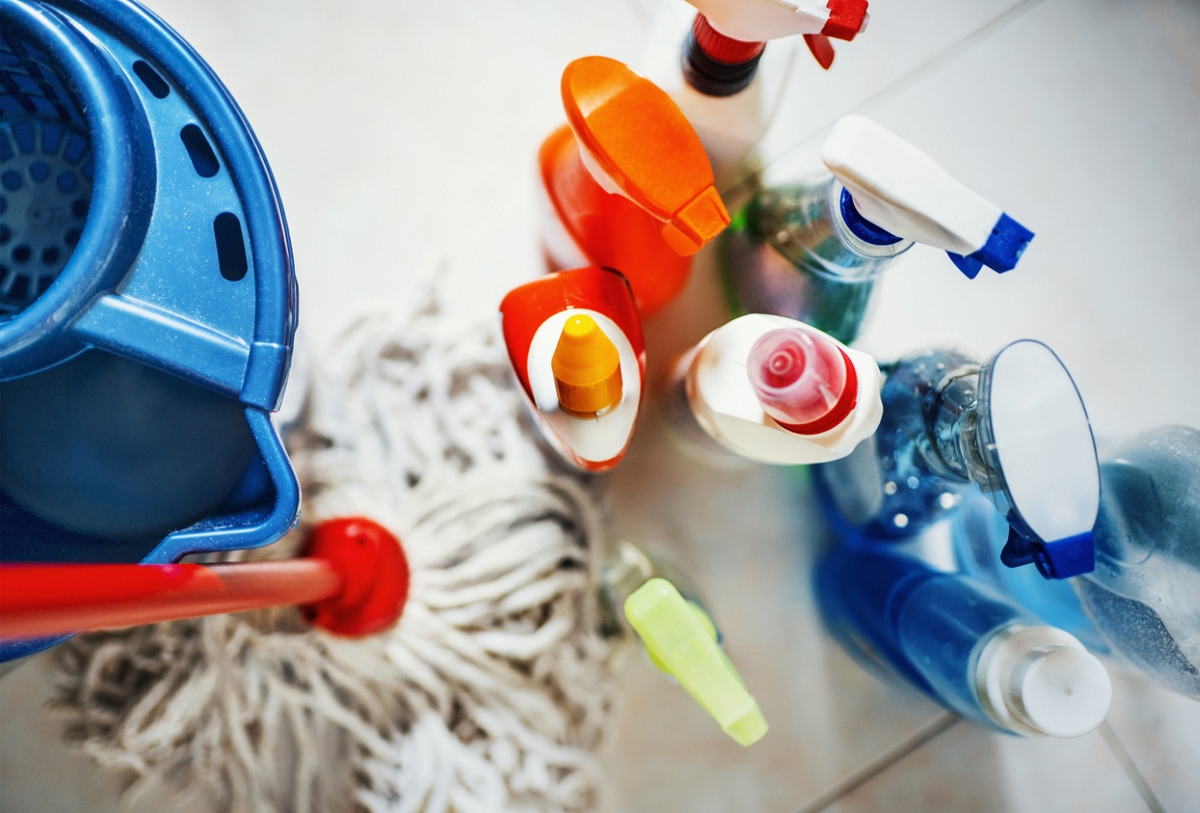
Chemicals are all around us. While many chemicals, such as water, are natural and nontoxic, others can be harmful. Chemical products found in homes and workshops include cleaning products, lubricants, solvents, and pest-control products. While these common household chemicals are useful, they can be deadly if ingested or misused. In fact, the leading cause of death at home is poisoning, accounting for 65 percent of all preventable home deaths. Practice chemical safety by following these tips:
- Before using a chemical product, read the label thoroughly.
- Get to know the nine GHS pictograms and what they mean. (GHS stands for Globally Harmonized System of Classification and
- Labeling of Chemicals, an international standard managed by the U.N.)
- Read the product’s safety data sheet (SDS), which will explain how the product can affect your health, what personal protective
- equipment (PPE) you need to wear when using it, and what first aid measures to take in an emergency.
- Never mix chemical products together unless they are designed to be combined.
- Always follow the label’s instructions for safe use and disposal.
- Store chemicals in their original containers.
- If you must move a chemical into another container, clearly label the new container, and never use an empty food or drink container.
- If you’re not sure what a chemical is or does, don’t use it, and dispose of it according to your local hazardous waste disposal regulations.
RELATED: What Are Forever Chemicals?
6. Sharps

The term “sharps” refers to medical items with a sharp point or edge that can puncture the skin. It can also refer to sharp objects such as knives or broken glass that may have been contaminated with bloodborne pathogens. Familiarizing yourself with sharps safety practices will help you manage any medical sharps you may use in the home and help you know what to do if you find sharp objects discarded outside:
- Always assume discarded needles or sharp objects are contaminated.
- Never try to recap a needle or break or bend it.
- Never handle sharps with bare hands. Use puncture-resistant gloves or tongs to pick up sharps and place them in a disposal container.
- Never throw sharps, knives, or broken glass into a trash bag.
- Dispose of medical sharps in an approved sharps container if one is available.
- If no sharps container is available, place the sharps into a container made of thick plastic that cannot be punctured, such as an empty
- bleach container. Clearly label the container with “Hazard: Sharps,” and seal the lid with tape before disposing of it.
RELATED: How to Dispose of Knives Properly: 3 Safe Solutions
7. Animal waste
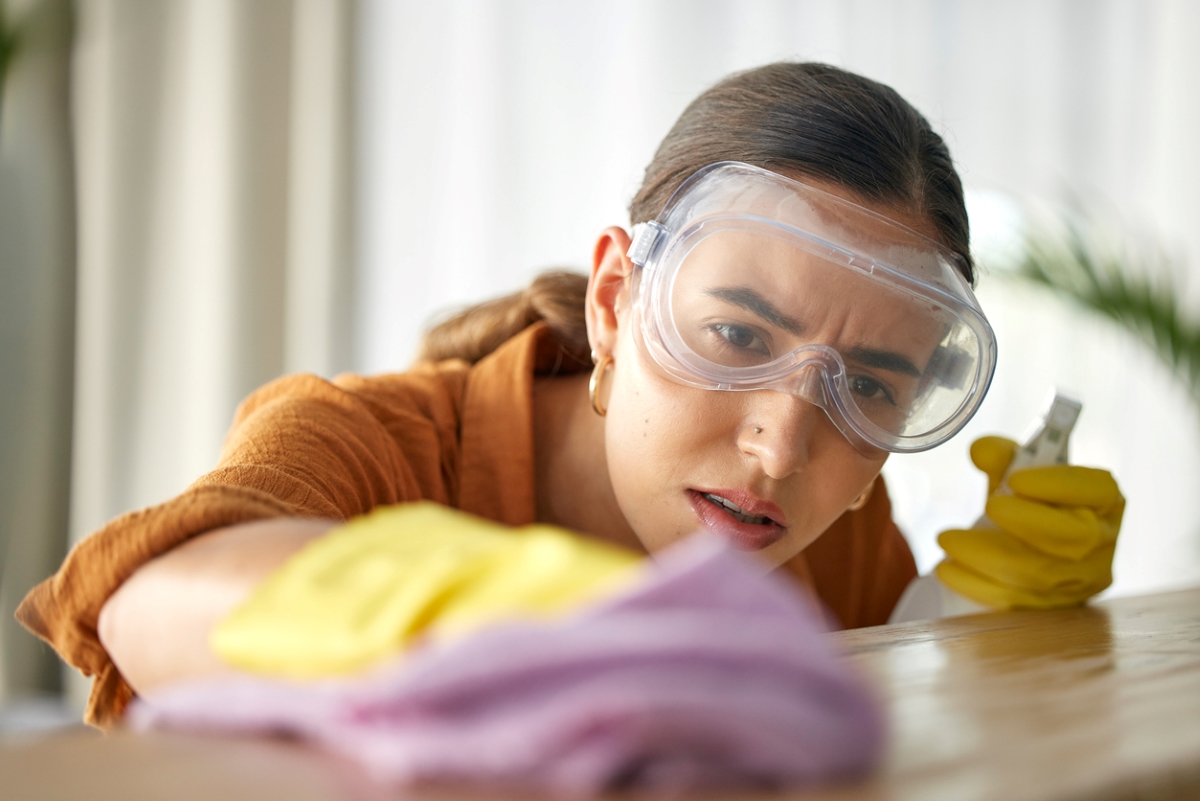
Animal waste is a biological hazard, as it can contain organisms that can infect our body and cause disease. For example, the fungus that causes histoplasmosis can grow in bird and bat droppings, and raccoon feces can be a source of roundworm. Since pest and animal control is often part of home maintenance, learning how to remove animal waste safely can help you reduce your risk of harm:
- Before entering a contaminated area, put on the proper PPE, such as a tight-fitting respirator mask, disposable gloves, and safety goggles.
- If possible, air out the area before cleaning it.
- Never sweep or vacuum animal droppings, as this scatters feces particles and pathogens into the air.
- Spray the droppings and surrounding area with a bleach solution or an EPA-registered disinfectant until the contaminated area is wet.
- Let the disinfectant sit for a few minutes.
- With gloved hands, wipe up the wet droppings with paper towels and place the soiled towels in a double garbage bag.
- Dispose of the droppings and towels in an outdoor garbage bin that is emptied regularly.
- Mop or sponge the area with disinfectant.
- Wash your gloves in hot soapy water before taking them off and disposing of them. Then wash your hands.
- Remove the rest of your PPE and wash your hands again.
RELATED: The Difference Between Cleaning, Sanitizing, and Disinfecting, Explained
8. Hand and power tools
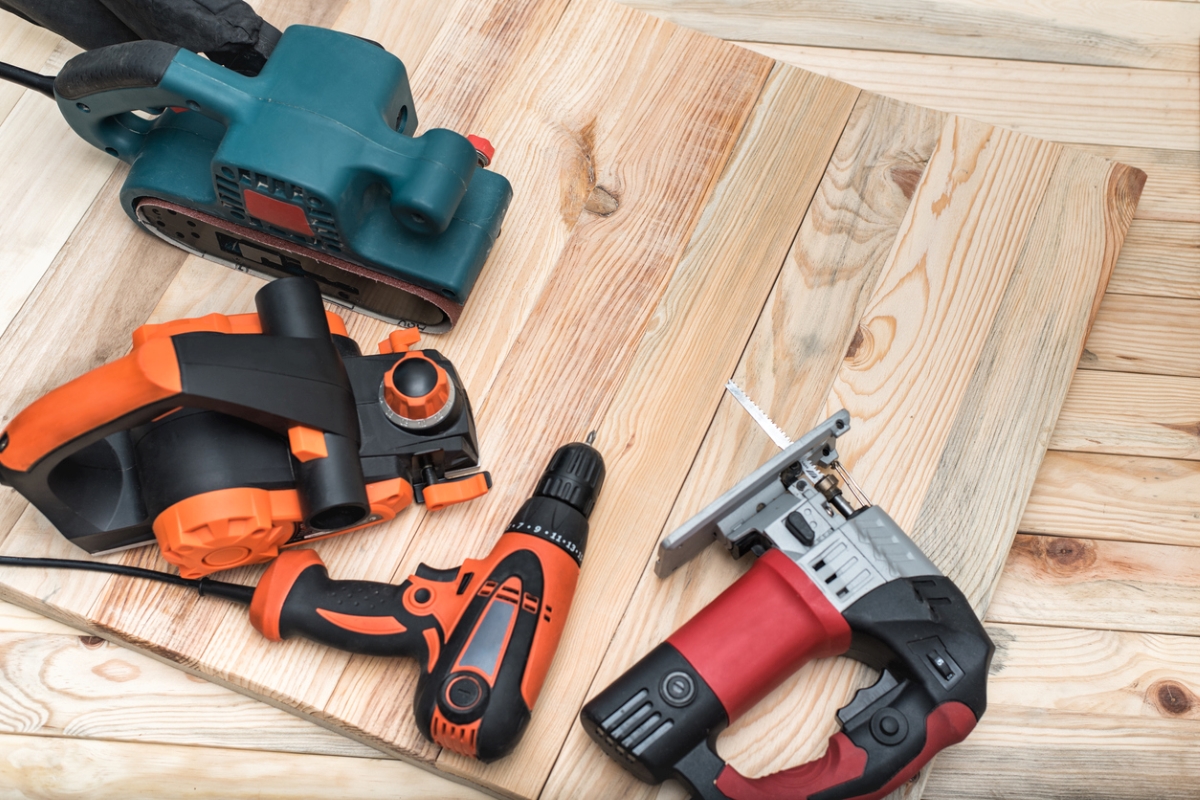
Hand and power tools are invaluable when working around the home, but they carry risks. The most common injuries caused by hand and power tools involve the hands or fingers. Eye injuries from flying particles are also common. Often, it is either improper use or improper maintenance of tools that leads to injuries. Follow these tips to use tools safely:
- Always use the right tool for the job. Never use a chisel as a screwdriver, a screwdriver as a pry bar, or a pry bar as a hammer. Each tool is designed for a specific use.
- Examine tools before using them, and do not use them if they are damaged.
- Keep tools in good condition by putting them away and not leaving them out or exposed to the elements.
- Keep cutting tools sharp and stored safely.
- Do not use power tools with damaged or missing guards.
- Never carry a power tool by the cord or hose, and protect cords and hoses from sharp edges.
- Maintain good body posture and balance while using power tools.
- Use both hands to control the tool whenever possible.
- Disconnect tools from power sources when not in use or when performing maintenance, such as cleaning or replacing blades.
- Never work with electric power tools in wet conditions.
RELATED: Proceed With Caution: 12 Power Tools That Can Kill You
9. Heat
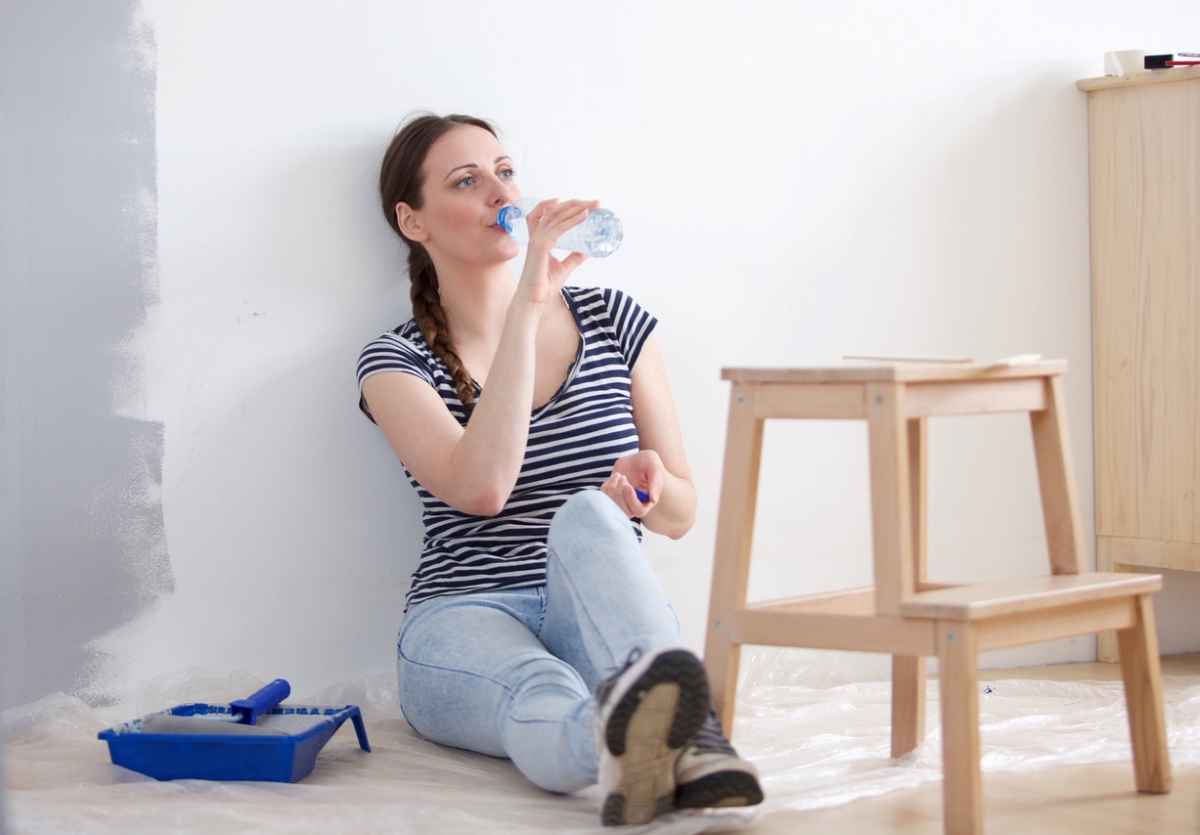
Heat illness can be dangerous, even deadly. Working in the heat is especially hazardous if you are not acclimatized to higher temperatures, so if you live where the weather changes with the seasons, beware of working outside during the first heat waves of the year. Take steps to protect yourself from heat illness while you work:
- Drink plenty of water.
- Take breaks in the shade to cool down.
- Wear a hat and light-colored, loose-fitting clothing.
- Recognize the signs of heat stress:
- Headache
- Clammy skin
- Dizziness
- Rapid pulse
- Muscle cramps
- Nausea
- Weakness
- If you are experiencing any signs of heat stress, move to a cooler area, drink water, and try to cool your body down by removing clothing or cooling with a fan or cold water.
- If symptoms persist, seek medical care.
RELATED: 12 Tips to Follow When a Heat Advisory Is in Effect
10. Electricity
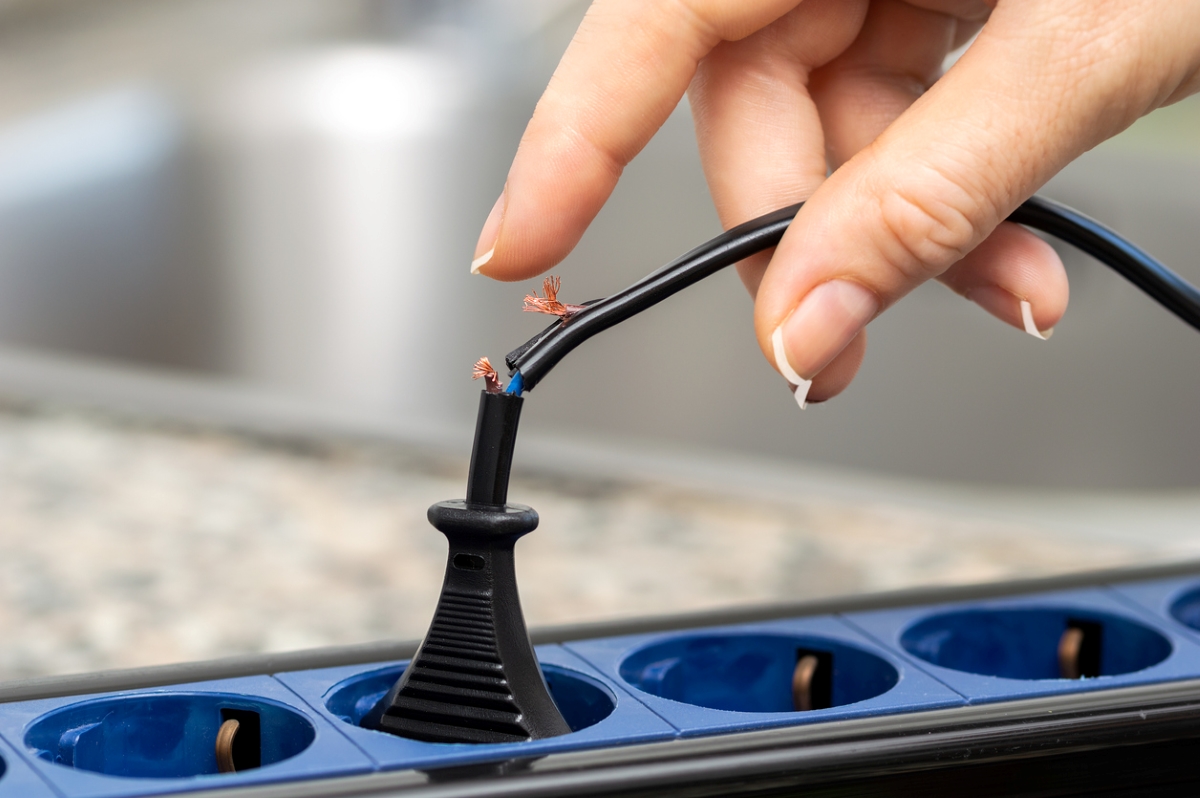
Electricity lights your home, powers your appliances, and makes life more comfortable, but it can also cause burns, shocks, and fires. While we may naturally be more safety-conscious around electrical equipment in the workplace, we shouldn’t neglect electrical safety at home. Here are some tips to minimize electrical hazards in the home:
- Make sure all receptacles, cables, and panels are covered.
- Do not overload an electrical outlet by plugging too many items into the same circuit.
- Keep water away from all electrical connections.
- Don’t link extension cords together—get one that’s long enough for the job.
- Plug heavy appliances directly into an outlet, not into a cord.
- Install GFCIs in bathrooms, kitchens, and garages to prevent shocks.
- Never use electrical cords that are frayed or nicked.
- Don’t run cords under rugs.
- If you have an electrical problem, call a qualified electrician.
